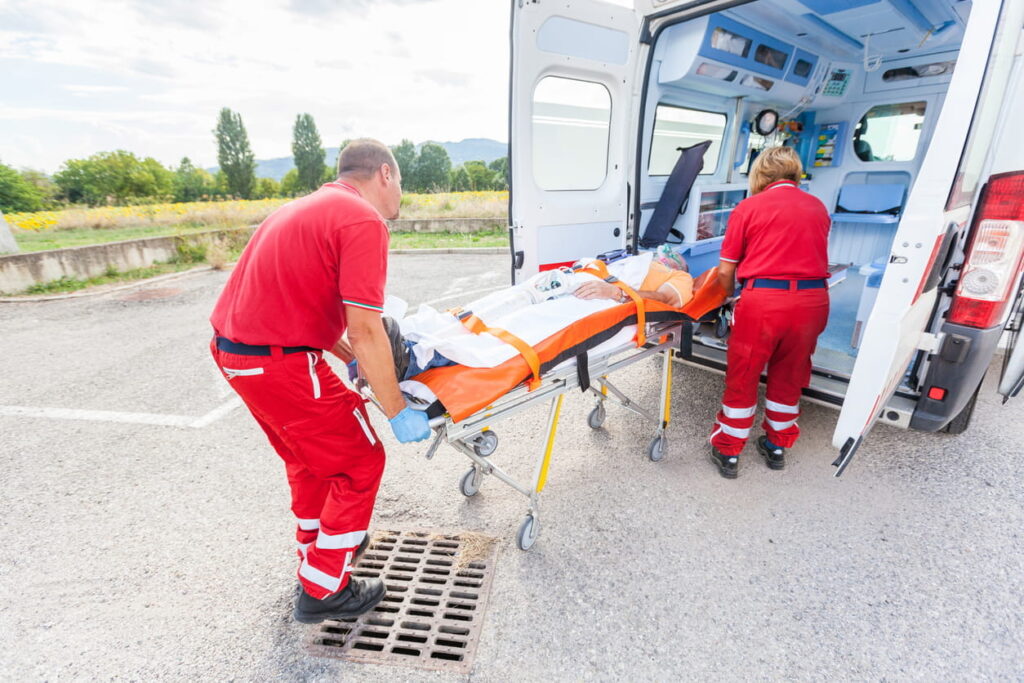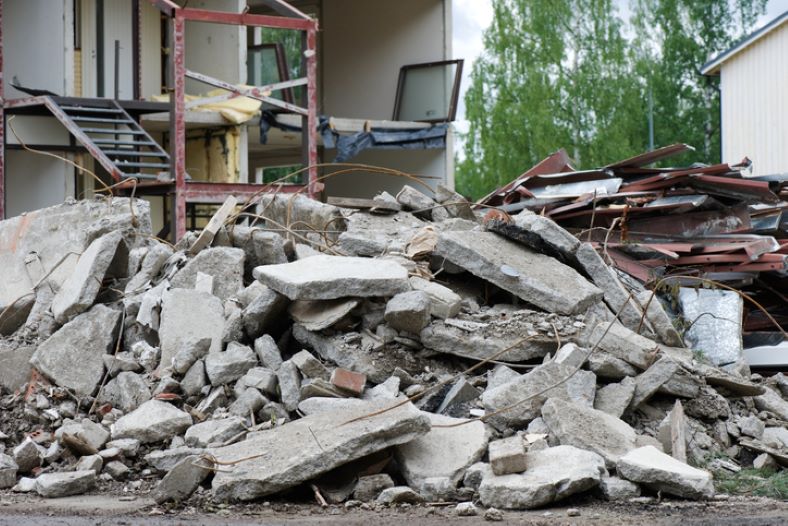What Is A Catastrophic Injury?

In 2019, more than one-fifth of the people in the U.S. from 18 to 44 years of age sought medical care at an emergency room. That year, car accidents injured over 2.7 million people, and workplace illnesses and injuries affected 2.8 million people. These figures don’t account for other causes of injuries, including slip-and-fall accidents and medical malpractice.
In 2021, over 62 million people received medical care for preventable injuries, and deaths from preventable injuries increased by 11.9% from the prior year.
What is a catastrophic injury?
Although the percentage can vary from year to year, severe injuries are everyday occurrences. Catastrophic injuries are the most severe injuries or illnesses that don’t cause death. People suffering from catastrophic injuries may or may not recover. Those that do recover may need years of medical treatment for their injuries.
Suppose you’ve suffered injuries from an accident and aren’t sure if they’re catastrophic. The best way to confirm what is a catastrophic injury begins with your prognosis. An injury that affects your ability to engage in regular activities for a prolonged period and requires extensive medical care can be considered a catastrophic injury.
Catastrophic injury victims have rights. A catastrophic injury attorney can explain your legal options and confirm whether you have grounds for a personal injury lawsuit. Whether coping with an accident or work injury, you can seek compensation if another party’s negligence caused your injury.
Proving claims for catastrophic injury in Colorado
Winning a catastrophic injury involves establishing the severity of your injury and the injury’s effects, what caused your injury, and the financial impact of your injury.
The extent of the injury
Catastrophic injuries are the most severe injuries people survive. They’re life-altering injuries because they affect the injured party’s ability to live the way they did before their injury.
Long-term effects
Injury victims must demonstrate their injuries did or will affect their lives for an extended period. Those suffering permanent injuries can use their diagnosis to verify they have a catastrophic injury. Those who may or may not recover must demonstrate they require extensive treatment and alter their routine activities because of their injuries.
Cause of injury
Catastrophic injury victims must establish who caused their injury. Winning any personal injury case involves establishing the at-fault party’s negligence. A person is negligent when their actions aren’t consistent with what most people would do if they were in the same situation.
Suppose you were walking on the sidewalk and a vehicle struck you. The law prohibits people from driving on the sidewalk, and most drivers obey this law. Therefore, the person was negligent because they broke the law and did something most people would not do.
Financial costs
Successful injury cases establish the financial damages suffered by the injured party. Claimants must show a direct link between their injuries and their incurred costs.
When to file for a catastrophic injury claim
Numerous injury sources could justify a catastrophic injury claim, including the following:
- Criminal acts: Suppose someone broke into your home, assaulted you, and caused catastrophic injuries. You can seek compensation from your assailant.
- Defective products: Companies may be liable for manufacturing or selling unsafe products
- Medical malpractice: You can seek compensation if a medical professional gives you the incorrect treatment, provides a wrong diagnosis, or fails to order appropriate tests to confirm your diagnosis
- Motor vehicle accidents (MVAs): Car, truck, motorcycle, and bus accidents injure millions annually. Proving a catastrophic injury claim from an MVA involves establishing comparative fault and proving liability. In some cases, one party may be liable for the accident. An example would be if a drunk driver caused an accident. However, if multiple parties share blame, the percentage of blame affects each party’s liability for damages.
- Slip-and-fall accidents: Slips and falls can cause brain injuries and bone fractures. The Centers for Disease Control and Prevention (CDC) reports that 20% of falls result in severe injuries.
- Workplace accidents: In 2020, slips and falls caused 18% of workplace injuries. Injuries from work equipment were also common.
- Other cases of negligence: Negligence isn’t limited to workplaces or roadways. Homeowners may be liable if they fail to eliminate safety hazards on their properties. Catastrophic injury victims can also seek compensation if recalled drugs cause their injuries.
The most common types of catastrophic injuries
Several physical injuries can cause damage that’s life-altering. Commonly diagnosed catastrophic injuries include the following:
- Amputation: Losing a limb may prevent you from continuing your career and affect your ability to care for yourself and others. Amputees often need long-term therapy and may need prosthetic limbs.
- Disfigurement: Disfigurement qualifies as a catastrophic injury because it impedes a person’s ability to function in society. Extreme disfigurement, such as facial scars, can cause others to stare. Employers may not consider people with scars or burns for positions that involve interacting with clients in person.
- Multiple bone fractures: Multiple bone fractures may heal over time, but you may be incapacitated for several months while your fractures heal. You may be unable to work or engage in your preferred social activities during this time.
- Organ damage: You may need surgery to repair organ damage. Severe cases may warrant removing the organ or seeking a transplant.
- Severe burns: All burn victims are at risk of infection after injury. Those with severe burns may need weeks or months of treatment in a burn ward.
- Spinal cord injury (SCI): SCIs can cause multiple symptoms, including temporary or permanent paralysis, numbness, pain, and loss of bladder control. Severe SCIs may require surgery and physical therapy; treatment can last several months.
- Traumatic brain injury (TBI): Some people suffer from headaches after a TBI. Severe TBIs can cause vomiting, vision loss, speech issues, and seizure disorders.
What does a catastrophic injury claim cover?
Catastrophic injury claims compensate for injury-related costs and the emotional toll of your injury. Your claim can require the at-fault party to pay for expenses such as the following:
- Childcare costs: Whether you’re a stay-at-home parent or care for your children after work, you can request reimbursement for childcare costs you incurred because of your injuries
- Medical bills: You can submit a claim for compensation for any medical bills, including costs for medical tests, doctor’s appointments, physical therapy, hospital stays, ambulance fees, medication, counseling, and deductible expenses
- Property damage: You may need to have property fixed or replaced if it was damaged in the accident. An example would be seeking compensation to repair your car after an MVA.
- Transportation fees: You may be unable to transport yourself after your accident. You can seek compensation for the costs of using an Uber or public transportation.
Your claim also covers compensation for your suffering. When you file your lawsuit, you can ask for compensation for the following:
- Anxiety
- Grief
- Inability to be intimate
- Inability to socialize
- Pain and suffering
- Trauma
Why you should hire an attorney for your catastrophic injury claim
Coping with a catastrophic injury is life-changing. Your medical treatments may be time-consuming, making it hard to perform routine tasks. Suppose you suffered a TBI. Some people struggle with memory issues and find it hard to concentrate. You may be unable to gather the information you need to prepare your case.
A catastrophic injury attorney lets you focus on your health and looks after your legal matters. At Bachus & Schanker, our Victim’s Advocates Team gathers all the information needed to prepare your case. Our team locates witnesses and finds evidence to prove your case.
In addition to handling the investigation, we’ll prepare all the legal documentation required to initiate a lawsuit and prove your case in court. We’ll handle negotiations with the at-fault party’s insurance company, explain any settlement offers received, and answer your questions so you can decide whether to accept the offer or take the case to court.
In addition to fighting for you to receive the damages you deserve, our Victim’s Advocates Team will inform you about financial assistance you could receive, such as Social Security Disability Insurance (SSDI) and nonprofit financial aid.
Calculating damages in a catastrophic injury case
Contact our catastrophic injury lawyers today. We can help you determine how much compensation to seek and whether you have a case that justifies punitive damages.
Financial compensation
Calculating financial compensation involves adding up the costs of your injuries. These include medical expenses, lost wages, property damage costs, and anticipated costs, such as future care needs if you require assistive devices or in-home care. Most costs in this category involve presenting bills for services rendered.
Non-financial compensation
Determining how much compensation to seek for the emotional damages after a catastrophic injury can be more challenging. Injury victims may qualify for compensation for pain and suffering, anger, anxiety, trauma, and other emotional impacts from their injuries, but these items don’t come with a price tag.
There are two options for calculating non-financial compensation. One is the multiplier method, and the other is the per-diem method. The multiplier method involves multiplying your total financial costs by a multiplier of five or fewer. A higher multiplier applies to the most severe cases. Therefore, people with catastrophic injuries could have their financial costs multiplied by four or five to calculate the non-financial compensation.
The per diem method seeks a fixed amount of compensation for each day from the date of the injury. We use your life expectancy to request future compensation.
Punitive damages
Punitive damages don’t apply to all catastrophic injuries. The at-fault party’s conduct determines whether you can seek punitive damages. The at-fault party must be guilty of gross negligence; in other words, they must have knowingly acted in a manner they knew might cause harm and did so without any concern for the well-being of others.
Colorado caps punitive damages to the amount awarded for your financial and non-financial compensation.
Contact Bachus & Schanker if you or a loved one have been injured

Our lawyers and Victim’s Advocate Team are ready to fight for you to receive justice after your catastrophic injury. We’ll handle the legal matters so you can prioritize your recovery without forfeiting your legal rights.
Sources:
All Injuries. (2023).
Facts About Falls. (2023).
Michas, F. (2022). U.S. population with emergency room visits 1997-2019, by age.
Number of road traffic-related injuries and fatalities in the U.S. from 1990 to 2020. (2023).
TED: The Economics Daily. (2020).Traumatic Occupational Injuries. (2022).






